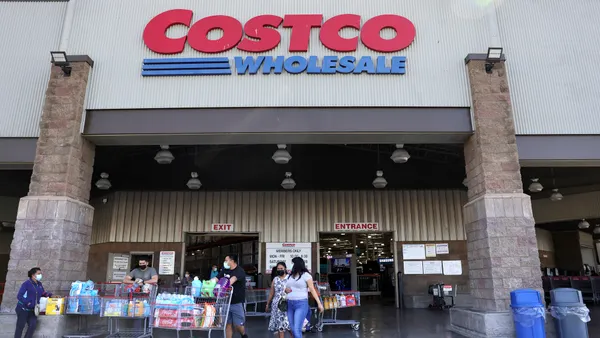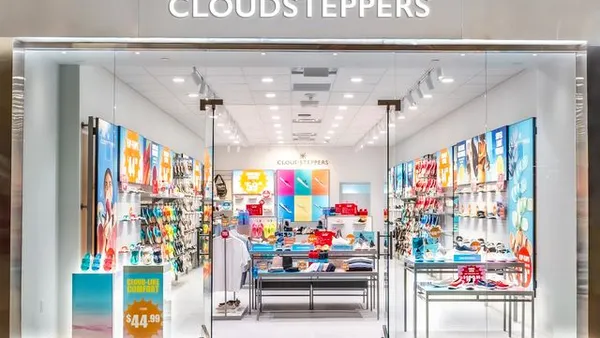The world of retail and hospitality is in a constant state of evolution. We’ve heard all the buzzworthy phrases: omnichannel, e-commerce, high turnover, war for talent, mobile, the customer journey, experiential customer service, and the supposed death of brick-and-mortar stores. It can be hard to keep track of the constantly changing nature of these industries and what businesses must do to stay relevant and to grow. Customers also have higher expectations than ever – they want the brands they align with to tell a story, to mean something, to symbolize an experience.
However, in these hyper customer-focused industries, the employee experience is often neglected. The first step in successfully communicating your brand mission and values is with your internal customers, your people, your brand ambassadors.
Let’s unpack what this means.
To remain competitive in the war for talent, which is especially widespread as the gig economy continues to grow, you must start from within. Investing in your employees’ financial well-being will foster an environment where they can spend more time focusing on serving their customers, and less time worrying about the next paycheck.
Enter harmonized human capital management (HCM): a way of thinking akin to harmonized retail, a term coined and written about by Steve Dennis, where the customer’s journey isn’t about the different channels offered, but the overall experience and how it’s communicated through those various channels. Harmonized HCM applies the same principles, but to the benefit of employees, the internal customer.
The harmonized HCM experience is the intersection between employees’ experience with their employers, the function of organizational culture, and the effective use of HR data. Harmonized HCM is about how this data is applied to the betterment of the employee experience. Finding the harmony in the way you manage your people will inspire and motivate your employees the same way music and food do through the harmonization of notes, melodies, and flavors.
The main purpose of harmonized HCM is to show up for your employees in meaningful ways throughout their workplace journey, from hire to retire. To echo the thoughts of Steve Dennis: talking about the different channels of employee engagement is non-productive; rather, the employee is the channel.
The pay experience for retail workers
According to the 2018 Mercer U.S. Turnover Survey, the U.S. average annual employee turnover rate in the Retail & Wholesale sector is 60.5%, and, according to the Bureau of Labor Statistics, an estimated 73.8% in the hotel and motel industry, making these industries the highest turnover sectors, and therefore incredibly competitive ones. How can operators effectively establish a harmonized HCM and employee experience for their workforces in this overly competitive market? Pay attention to your employees’ pay experience.
National Payroll Week is around the corner on September 2-6, sparking a nationwide conversation about payroll and what it means to both the employer and the employee. Meaning, now’s a better time than ever to figure out what a paycheck means to your employees, and how your organizations factor this in when determining how to best manage your people.
Ceridian’s Pay Experience Report, conducted by Hanover Research, revealed that employees’ experiences with getting paid – not just how much, but how compensation is determined and how easily they can access what they’ve earned – directly impacts what they think about working for an organization. Exploring the inner workings of how and what your employees are paid, especially in the often-unpredictable retail industry, is a key touchpoint in the harmonized HCM journey.
The pay experience can have a big impact on employee satisfaction, retention, and performance
The report showed that 80 percent of North American workers feel some degree of stress about pay and money issues on a regular basis, and only 30 percent of workers are completely satisfied with the transparency of their pay information.
A positive and transparent compensation experience comes down to communication. However, more than one-in-three (37 percent) surveyed do not feel comfortable discussing their pay with their managers. The data also suggested it may be time for organizations to rethink the traditional pay cycle to align with the rise of the gig worker, a type of employee that is no stranger to the world of retail, and a key trend that will continue to impact the future of work and talent.
To that point, the survey showed that 59 percent of full-time and part-time employees are currently paid every two weeks. Contrastingly, when asked how they would like to be paid, 37 percent would prefer to be paid weekly, signaling a need for more frequent, regular access to their earned wages.
Technologies for the modern workforce
Solutions such as Dayforce On-Demand Pay, with which employees can request and receive a payout based on all or part of their earned wages, are creative and modern payroll options. The research found younger people, those between the ages of 18-34, were more likely to agree to participate (51 percent) in an offering like Dayforce On-Demand Pay. Solutions like this would fare well in the statistically young retail industry (majority in the 25-34 age range), especially as the gig economy continues to thrive.
While the pay experience is only one piece of the harmonized HCM puzzle, it acts as a foundation in creating meaningful experiences for the retail worker. By illustrating that the pay experience matters, you set the stage for your employees to thrive in the workplace, not just survive. Act on this by leveraging new technologies and by being thoughtful about employees’ actual experience with their paycheck. By doing this, you are exhibiting respect and understanding that a paycheck is not just a paycheck, and you are on the path to the harmonized employee experience your employees deserve.









